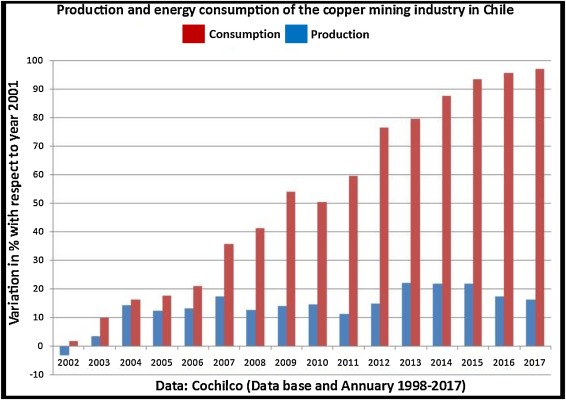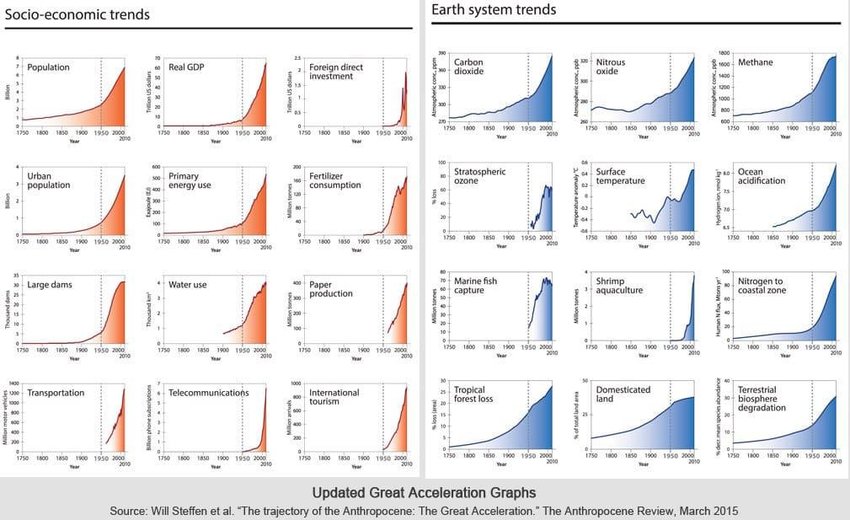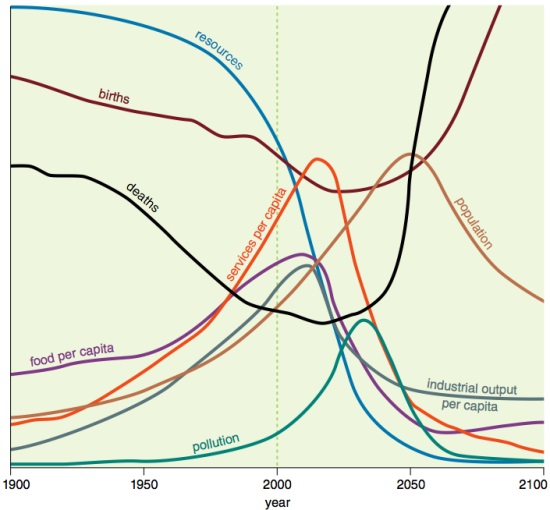« Seasonal Greetings and State of the World | Home | An Unprecedented Geopolitical Tilt »
End Games of Modernity – a Convergence of crises
By Karl North | January 18, 2022
As I have written earlier in this series, modern civilization has reached an end game[1]. I am defining modernity as a form of civilization that began in the West – let’s call it EurAnglia – 500 years ago and spread in different degrees to the rest of the planet by Western imperial conquest. This essay will focus on the Western and especially US end game, with which I am most familiar. Also, the crises that I will identify are hitting harder and sooner in the West for reasons that will become clear in the discussion. To help us understand how this process may play out, I think it will be useful to keep in mind five defining characteristics of the end game and explore their multiplier effects. In overview the characteristics are:
- The depletion of natural resources signals the end of abundance
- The ascendancy of capitalist values and the cult of the individual
- Financialization engulfs and consumes the productive economy
- The end of Western hegemony
- Totalitarian solutions emerge
In this essay I will explore their interaction and likely resultant scenarios. I will argue that their convergence brings human history to an unprecedented turning point.
The end of cheap resources
In recent times, human consumption of resources has experienced exponential growth, roughly along the line displayed in the graphs.
So far, the societies in the West that industrialized first have consumed the lion’s share. Hence, as resource depletion continues, the economies in Western modernity are now the first to experience shrinkage. Flush with oil, the US was the last to feel it. In the peak of net energy era of my childhood in the 1940s, gasoline was $0.25/gallon, but has always been $4-6/gallon in energy poor Europe. Now, the rising energy cost to maintain production of other resources adds to general energy depletion, as in this example for copper.[2]

First published in 1972, the Limits to Growth world model showed how key variables change over time as erosion of the resource base occurred . Such simulation models can indicate only the general shape of change, not specific peak moments, so the time line on the graph exists only to suggest a rough time frame over which the changes will occur.
As these key variables peak and begin to fall, populations in the West, hooked on the relative prosperity that massive consumption of natural capital confers, will feel the most pain.
Capitalism and the cult of the individual
Ours has always been a social species. Hence, human society has always aimed at a balance between policies that favor the individual and those collective policies that guarantee the survival of society as a whole. As the advent of agriculture yielded a surplus above survival needs, a ruling minority appeared that had expropriated most of the surplus. Nonetheless, rulers recognized that social stability required some sort of social contract, however implicit, as in British common law, for example. Even under feudal frameworks, the peasant majority had permanent rights and the nobility had obligations to the social whole.
The rise of a capitalist class to become a ruling power over the last 500 years has brought with it a set of values that increasingly competes with the values inherent in the idea of a social contract. In its extreme expression it denies that society exists. According to the infamous formulation of Margaret Thatcher, there is no such thing as society, only individuals maximizing their self-interest.
A type of society where individual liberties trump collective goals was congenial to capitalists, who sought minimal constraints on enterprise. The Protestant Reformation gave individualism and therefore capitalism, a major boost in Western Europe. It liberated the individual from the controlling power of the Church, not only to choose an independent relationship with the deity, but also from the social and economic obligations of members of the community of the faithful to each other that Catholicism promoted.
The colonization of North America fostered a more extreme individualism for historical and geographical reasons. By 1600, a rigid social order had developed in Western Europe to deal with the scarcity of resources and their capture by privileged classes, leaving the individual little opportunity for self-improvement. Wood, the main energy source, had become so scarce as to create a firewood crisis. By contrast, North America offered a seeming endless frontier of natural capital to exploit. Moreover, more extreme versions of Protestantism escaping from persecution in Europe were prominent in early colonial America and put the stamp of their values on all later cultural development. In an apparent ‘land of opportunity’, once initial survival needs were met, everything was up for grabs. Whatever socio-economic problems that mindset generated could be ignored by moving away from them, following the western frontier. Thus, the values of self-reliance displaced the European legacy of a reliance on a communal ethic embodied in the notion of a commonwealth and the institution of the Commons.
Hence, the full flowering of an economic ethic of ‘laisser faire’, or anything goes, found its most fertile ground in what became US society. It became a cultural norm that the distribution of resources was an unrestrained dog-eat-dog competition where everyone was out for himself and ‘the devil take the hindmost’. Political conservatives were encouraged to become the guardians of laisser-faire – the police who in defense of individual liberty censured any government intervention that diminished the profits of business. Political liberals were assigned the role of upholding the illusion of government as caretaker of the common good, however poor the results. Economists, understanding their role as the ideologues of an economy where maximizing private profit trumps all other values, explained the resultant devastation of the natural resource base and the suffering of exploited classes as “externalities”.
The logical result of such a well-defended system was a relatively orderly process of concentration of wealth in an ever-smaller minority class. Because this process concentrated power as well, the wealthy used that power to bend the main institutions of society to increasingly serve their interests. Government, already mainly a tool of the rich, became more so. Private control of research funding brought science under their control. As owners of the mass media and the public’s main source of information, they indoctrinated the masses with the illusion of democracy, which left the rich free to rule. Control of information allowed the manufacture of desire for goods and services, thus boosting production and profits. Discretionary consumption grew to be conspicuous among the many forms of waste generated by the system, all of course dismissed as externalities by the economic ideologues.
As the values of private profit über alles penetrate ever deeper into the body politic, the miraculous convenience of technologies, like the novocaine numbing the dentist’s drilling, keep us entranced until the inconvenient consequences downstream in time become too obvious to ignore. Some examples:
- A corrupt military-industrial cabal delivers expensive weaponry that cannot defend the country.
- Instead of health care for all, long the norm in Western Europe, in the US a big pharma cartel delivers expensive treatments that often cause more health problems than they solve.
- The junk food production system under monopoly control delivers obesity, cancer, and cardiac distress.
- Atomization of society breaks down communities.
- Social and ecological damage mounts while official narratives dismiss them as externalities.
These sorts of breakdowns will continue to accumulate as just the normal result of the system doing its thing, until perhaps communities across Western Civ become fed up, or are persuaded to accept them as the new normal. The ultimate outcome of laisser-faire playing itself out has been the gradual destruction of Western economies as their banker and corporate elites shipped whole industries out to more profitable locations.
Financialization and other foibles
The last three characteristics of modernity’s end game that I will discuss are effects of the two already described and attempts of ruling elites to deal with them. To summarize: 1) Modern industrial civilization has extracted the low hanging fruit of all resources essential to its survival. 2) The extreme penetration of laissez-faire capitalism has created an unsustainable form of civilization. Their total combined effect will be the catabolic collapse of modern societies. As this deterioration has already begun in the West, my account will focus there. Then I will consider what shadow economies and new civilizational forms might take root in the interstices of the collapse.
Aware of a collapse process that they could not prevent, Western ruling elites have devised strategies to achieve two goals:
- Keep the profits flowing to themselves as long as possible,
- Keep society from revolting in the course of its economic decline.
A partially effective pacification ploy has been the Walmartization of the economy – an avalanche of cheap consumer goods from foreign cheap labor nations financed by rising debt. Another is allowing the dilapidation of infrastructures, now many decades old – electric grid, highways, bridges, water and sewage systems –whose replacement would require tax increases that are politically toxic in an era of declining prosperity. Also, governments have systematically rigged key statistics – inflation, employment, production, etc. – to mask the shrinking economy.
Among the riskiest strategies, the one that appears likely to trigger the next bump down the economic stairway is financialization. The term refers to a progressive shift of power from corporate elites to banker elites, and a shift from an economy that produces real wealth to a speculative, casino economy.
In one sense, financialization is a normal outcome of concentration of wealth under capitalism. Bankers, as the lenders of last resort, gradually become more powerful throughout the modern age, adding risk-free brokerage fees to usury – rent producing placement of capital. However, to address the problem of sustaining consumption in an economy becoming deindustrialized, financial elites turned to fostering debt at all levels of society. The tool of choice was the Federal Reserve, which from its inception in 1913 had always been a cartel of self-serving top bankers masquerading as a monetary stabilization service of the US government. In the last twenty years, the Fed dumped cheap money at low interest rates into an economy actually in decline, creating bubbles of fake wealth in the stock and real estate markets. This enriched the financial class further while pacifying the masses by concocting a false impression of economic growth and briefly sustaining consumption. It also increased debt at all levels of society from individuals to the government, a process that could not last.
Viewed from another angle, the present combination of cheap money policy and increasing debt peonage is unprecedented in the modern age. As astute economic analysts have predicted for several years, it will lead to the mother of all financial crashes, and accelerate the current downward trend in Western economies. Of course, financial crashes have occurred before, even regularly, the last one in the Great Depression of the 1930s. They are inherent in a system that promotes unrestrained greed. And the spectacle of spreading debt has brought whole civilizations to a standstill until relieved from on high by across-the-board debt erasures, or ‘jubilees’ as they appeared in scriptural accounts of ancient times.[3] The most recent example occurred as part of the fall of the Roman Empire, and led to centuries of censure of the practice of usury – money lending at interest – by both major civilizations that arose from the ashes of the Empire – Christianity and Islam. But in the present situation there is no politically viable way out of money printing: more of it will cause hyperinflation, less of it causes interest rates on the massive debts to rise, which will make debts unpayable and crash the debt economy.
The End of Western hegemony
Because the globalized economy is closely interconnected by trade and financial ties, the coming financial crash will affect all societies. Most importantly, it will accelerate the end of Western hegemony, consisting of the US empire and its European vassals and underdeveloped colonial dependencies, and the rise, already well along, of a multi-polar world, centered around the Chinese economy, itself powered by Russian and Iranian oil.
After a 500-year hegemony in which the West saw itself as the pinnacle of progress and the US as the “exceptional” nation, the consequences we are already seeing of this unprecedented shift in dominance toward Asia are both cultural and economic.
Economic fallout
In expectation of the dollar losing its purchasing power, other nations are diminishing their dollar holdings. This signals the eventual end of the dollar as the world’s reserve currency, and the end of its unfair commercial advantages and geopolitical benefits to US imperialism. China and Russia are already trading with each other and bilaterally with other nations in ways that avoid the petrodollar. For example, China is now the major consumer of Saudi and Iranian oil, much of it in direct trades. This trend sets the stage for the weakening of the dollar against other currencies, which will raise prices to US consumers of the many products the US now imports. The weakening of the dollar will add to the inflationary effect of years of financialization. And these troubles are happening at a time when decades of indoctrination to capitalist values, equating cooperation with communism, have destroyed communities as potentially viable local economies that could replace the failing national market and financial system.
The end of cheap domestic energy sources and increased reliance on foreign ones comes at a time when Western nations have been losing geopolitical control of major oil sources – Iran, Iraq, Nigeria, Venezuela among others. This trend combined with the move away from the dollar will aggravate the downhill slide of Western economies.
The convergence of all the end game crises that I outlined at the outset can easily trigger a cascading collapse as different feedback loops interact, as outlined in this diagram;

The convergence of crises and its implications are perceived only vaguely in Western societies, as elites have tried to disguise them in various ways. Unparalleled in our historical experience, they are bound to generate reactions that are both unique and unpredictable. How will the masses react to the acceleration of an already falling standard of living that for decades they have been led to believe would never happen? Under these conditions, how will ruling elites maintain social control?
Toward a creeping totalitarian agenda?
The mainstay of social control in the US has been the manufacture of consent since the rise of sophisticated advertising techniques drawing on subconscious drives, introduced early in the 20th century by Freud’s kinsman, Edward Bernays. Later, using the same techniques, Bernays added political and cultural manipulation to what had become an addiction to consumerism powered by the manufacture of desire.
The latest example of information manipulation for political and economic purposes was a psyop – a project to scare whole populations to accept a tyrannical and economically devastating set of lockdown policies and a dangerous and unneeded injection posing as a vaccine, which has reaped billions in profit to the pharmaceutical industry, all falsely justified as necessary against the spread of a virus that, for most people, posed no greater threat than a bad flu year. The policies included medical directives that contradicted empirically validated, reliable medical practices and suppressed the use of safe, effective therapies that could easily have controlled the disease. It was these policies, both medical and economic, that caused excess US deaths in the hundreds of thousands in the last two years, not the virus.
After two years, this project has revealed to astute observers the power, accumulated over decades, of the pharmaceutical industry to control by pressure or promise of benefit, a wide array of actors. This industry power enabled a small mafia of US health officials and industry billionaires to covertly create illegal genetically engineered biowarfare products – a virus and a gene therapy posing as a vaccine – and spring them on the world using a carefully orchestrated official narrative coordinated between government, mass media, internet social media platform monopolies, the research community, peer reviewed scientific journals and the vaccine industry, all delivering essentially identical messaging. The rollout of the pandemic narrative has been a spectacle of unprecedented information warfare against an unsuspecting public. The coordination and timing of the rollout reveal preparation and planning.
The unprecedented lockdown policies of the “pandemic” project achieved a secondary goal – to accelerate an already failing US economy – but deflect blame onto a virus rather than on ruling elites.
However, such an ambitious and elaborate project carries considerable risks. Incessant investigation has exposed the official narrative as a tissue of lies and forced medical authorities to backtrack on them one by one:
- In August, 2021, the WHO quietly reversed its directive for the PCR test, its primary weapon of deception in the official narrative, while allowing the false counting of Covid cases to continue until 2022 when the policy change would take effect.
- The deception that counted positive PCR results as cases of the disease was so blatant (because most of those who test positive are not sick) that medical authorities tried to cover it up by inventing a new category of Covid case – asymptomatics – people who are completely healthy but should somehow be counted as cases of Covid disease.
- The rigging of the count of hospitalizations and fatalities was finally admitted by the master of pandemic deception, Anthony Fauci himself, when he recently acknowledged the difference between cases with Covid and cases of Covid.
- Private investigation has also shown that the FDA’s language in the text of its emergency authorization of the injection carefully defines it as a “gene therapy” while falsely proclaiming it a vaccine to the public.
As the official pandemic narrative begins to lose traction with the public, ongoing economic consequences of its insane lockdown policies are combining to generate anger. Real inflation at retail for consumers has risen to around 16%, twice the official (rigged) rate, and producer inflation now at 21% promises higher future rates for consumers, even if current supply chain problems are solved.
Hence, as the convergence of crises accelerates the falling standard of living of most of the denizens of EurAnglia, elites are searching for new fear campaigns to keep order. The climate emergency scare campaign worked only on the Greta-like enviros. And another 9/11 type false flag to scare up a new foreign enemy has a poor chance to work again.
However, a society experiencing severe loss of trust in all major institutions is easy prey to totalitarian ideologies and policy solutions. The present such project of some elites is a centrally controlled digital technocracy. It is marketed as “smart technologies” that will solve all social and environmental problems. But it is so grandiose and global in scope that even if it gains some traction with the public, it will gradually spin out of control, as most totalitarian regimes have done in history.
Conclusion
Taken as a whole, the five convergent crises as they interact are unmatched in at least the last 500 years. The complexity of their ripple effects renders them unpredictable in detail in the short run, but due to resource exhaustion will at length end the industrial age. Elites appear ready to retain their privileges with authoritarian strategies.
The alternative of course is to resist in any possible way, distance oneself from mainstream institutions and economies, and build parallel structures. One can imagine it as a kind of shadow society in embryo that experiments with new civilizational forms – in expectation of the inevitable failure of totalitarian projects and the resultant disintegration and partition of large states. As elite projects experience confusion and disarray, their factional disputes will open crannies that provide opportunities for all sorts of resistance to emerge.
The irony in the situation is that the faster industrial civilization fades away the greater the suffering, but also the greater chance that a livable natural resource base will remain to support those who survive the descent.
[1] The Age of Modernity and its Discontents
End Games of Modern Civilization: false flag scare strategies and global cultural revolutions
More End Games of Modern Civilization: factional fractures in ruling elite policy
Clinging to the Titanic, or how to let go
[2] Hagens, N. J. 2020. “Economics for the future: Beyond the Superorganism”
[3] Excellent histories of financial mismanagement leading to crises of debt servitude are the works of anthropologist David Graeber, Debt: The First 5000 Years and political economist Michael Hudson, …and forgive them their debts: Lending, Foreclosure and Redemption From Bronze Age Finance to the Jubilee Year.
Topics: Political and Economic Organization, Social Futures, Peak Oil, Relocalization, Uncategorized | No Comments »





